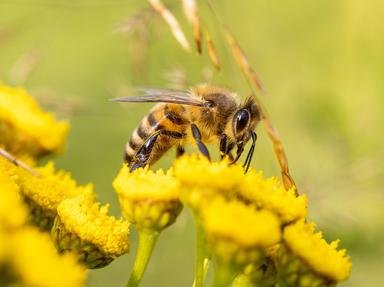Quiz Answer Key and Fun Facts
1. Ok let's start with the basics. A tarantula hawk is neither a tarantula nor a hawk, so what is it?
2. Which of the following is a regular predator of the tarantula hawk?
3. What do adult tarantula hawks eat primarily?
4. A neighbor of mine once found a tarantula hawk near her baby. She nervously asked if her baby might have been stung. Why was I immediately confident he had not been stung?
5. Adult tarantula hawks do not eat spiders so why do they hunt them?
6. How do tarantula hawks locate tarantulas when hunting?
7. At one point in the movie "Wild Wild West" the heroes are in a desert and witness a tarantula hawk attack on a spider. The precision aerial attack shown is not the way it usually happens in reality. What does a real attack usually look like?
8. What are male tarantula hawks mainly doing while the females are out hunting?
9. In a fight between a tarantula hawk and a spider, the tarantula hawk always wins.
10. Tarantula hawks sometimes get drunk.
Source: Author
namrewsna
This quiz was reviewed by FunTrivia editor
guitargoddess before going online.
Any errors found in FunTrivia content are routinely corrected through our feedback system.

